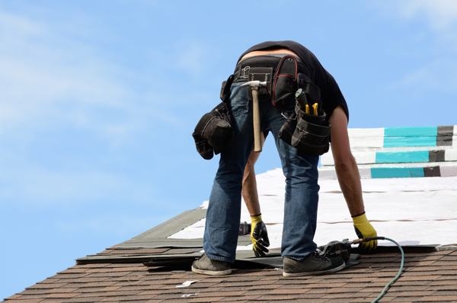Every aspect of a house’s construction and design plays a crucial role in creating energy-efficient homes. One often overlooked but significant contributor to energy efficiency is the roof. A well-planned roof replacement can go a long way in reducing energy consumption, lowering utility bills, and making your home more environmentally friendly.
Understanding the Impact of Roofing on Energy Efficiency
Roofs are the first line of defense against the elements and bear the brunt of the sun’s heat. As a result, they play a vital role in regulating indoor temperatures. A conventional roof, particularly one composed of darker materials, can absorb a significant amount of heat, causing the interior to become warmer and increasing the workload of air conditioning systems during hot weather.
Selecting Energy-Efficient Roofing Materials
Choosing roofing materials is paramount when considering a roof replacement with energy efficiency. Opt for materials that reflect a higher percentage of sunlight and absorb less heat. These materials, often called “cool roofs,” include reflective shingles, tiles, or metal roofing with special coatings designed to bounce solar radiation back into the atmosphere. Cool roofs can substantially decrease the heat absorbed by your home, thus reducing the need for excessive cooling.
The Benefits of Proper Insulation
During a roof replacement, it’s also essential to ensure proper insulation is installed or upgraded. Insulation not only helps maintain indoor temperatures but also prevents the transfer of heat between the roof and the interior of your home. Proper insulation can significantly reduce heat gain in the summer and heat loss in the winter. This means your heating and cooling systems won’t have to work as hard to maintain a comfortable temperature, leading to energy savings.
Ventilation For Improved Airflow
Adequate roof ventilation is a critical yet often underestimated factor in enhancing energy efficiency. Proper ventilation helps expel hot air accumulating in the attic space, preventing it from seeping into the living areas below. It also prevents moisture buildup that could lead to mold growth and structural damage. Maintaining a well-ventilated attic can prevent excess heat from radiating downward and causing your cooling system to work overtime.
The Role of Roof Color
Believe it or not, the color of your roof can impact energy efficiency. Light-colored or white roofs reflect more sunlight, absorbing less heat and maintaining lower temperatures. This can result in a cooler interior and a reduced demand for air conditioning. Dark-colored roofs, on the other hand, absorb more heat and are better suited for colder climates where heating is required more often.
Working With Professionals
Maximizing energy efficiency through a roof replacement requires expertise and careful planning. Hiring a professional roofing contractor with experience in energy-efficient roofing solutions is essential. These experts can help you choose the right materials, ensure proper insulation and ventilation, and implement best practices to achieve the desired energy-saving results.

